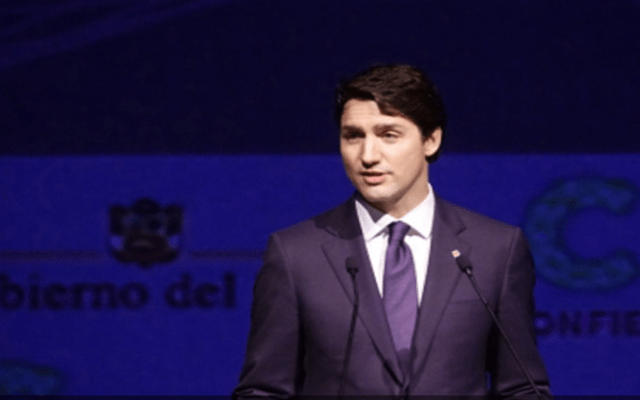Ottawa: Canadian Prime Minister Justin Trudeau announced the release of the country’s 2030 Emissions Reduction Plan, aiming to reach its new climate target of cutting emissions by 40 per cent below the 2005 levels by 2030.
The ambitious plan, including C$9.1 billion ($7.28 billion) in new investments to cut pollution and grow the economy, will put Canada on track toward the goal of achieving net-zero emissions by 2050, Trudeau said at the Globe Forum sustainability conference in Vancouver.
“Taking real climate action that is not only ambitious, but also achievable, is key to building a strong economy in the 21st century. With the additional measures announced today, we are continuing to deliver on the priorities Canadians asked us to address: clean air, good jobs, a strong economy, and a better future for everyone,” Trudeau said.
According to the plan, Canada will invest more than C$2.9 billion ($2.32 billion) in charging infrastructure, providing financial support to make buying zero-emission vehicles more affordable, supporting clean medium- and heavy-duty transportation projects, and developing a regulated sales mandate so that 100 per cent of new passenger vehicles sold in Canada will be zero emission by 2035, with interim targets of at least 20 per cent by 2026, and at least 60 per cent by 2030.
By investing around C$1 billion ($800 million), Canada will develop a national net-zero by 2050 buildings plan, the Canada Green Buildings Strategy, to support the adoption of the highest tier building codes, pilot community-scale retrofits, and facilitate deep energy retrofits for large buildings.
Canada will develop a regulated Clean Electricity Standard, making additional investments of about C$850 million ($680 million) in clean energy projects like wind and solar power to move Canada’s electricity grid to net-zero emissions by 2035.
Canada will develop an approach to cap oil and gas sector emissions to achieve net-zero emissions by 2050, reduce oil and gas methane emissions by at least 75 per cent by 2030. The oil and gas sector makes up the biggest share of Canada’s carbon footprint, with 26 per cent of total emissions. Oil and gas emissions are up 20 per cent since 2005.
Canada will support farmers with about C$1 billion ($800 million) for new and expanded programmes to help them develop and adopt sustainable practices, energy-efficient technologies, and solutions like capturing carbon from the air.
Canada will invest C$2.2 billion ($1.76 billion) in expanding the Low Carbon Economy Fund to support projects from governments, schools, non-profits, Indigenous Peoples, and more to cut pollution and create jobs in communities across the country.
Canada will make an additional investment of C$780 million ($624 million) to help its oceans, wetlands, peatlands, grasslands, and agricultural lands capture and store carbon, and explore the potential for negative emission technologies in the forest sector.
Canada will also develop a carbon capture, utilisation, and storage strategy and introduce an investment tax credit to incentivise the development and adoption of this important technology.
This is the first Emissions Reduction Plan issued under the Canadian Net-Zero Emissions Accountability Act. Progress under the plan will be reviewed in progress reports produced in 2023, 2025, and 2027. Additional targets and plans will be developed for 2035 through to 2050.



















